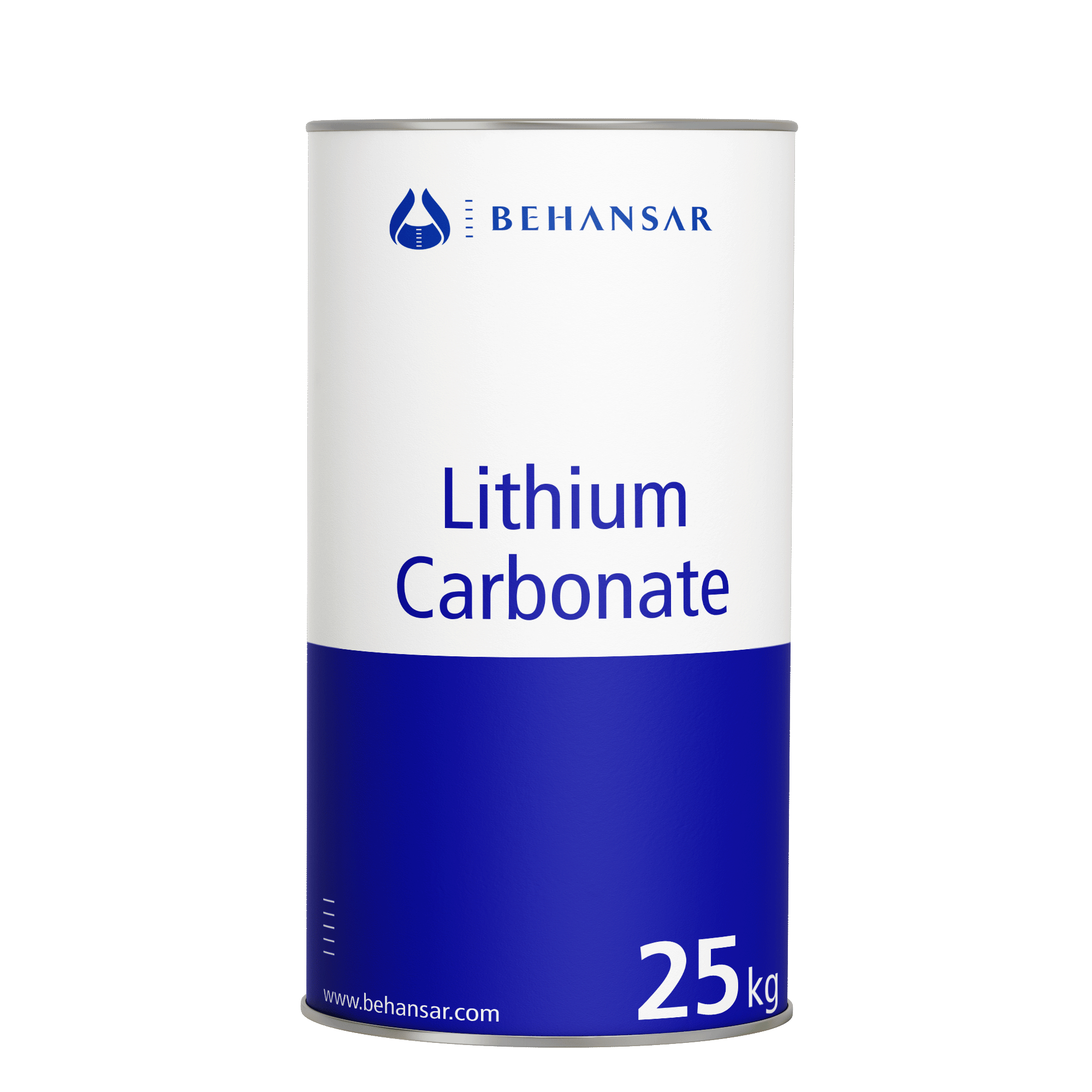Lithium Carbonate
| Chemical Formula: | Li2CO3 |
| Molecular weight | 73.89 |
| .CAS No: | 554-13-2 |
| Applications: |

About Lithium Carbonate
Lithium is the lightest representative in the group of alkali metals. It is found in many different minerals but only some of them are known, like lithium-carrying pegmatites. Lithium is also present in the natural brines of some highly saline lakes. The concentration of lithium in brine is higher than pegmatites so that 5.22 tonnes of brine and 35.56 tonnes of pegmatite should be extracted for producing each tonne of lithium.
Geographically speaking, major lithium resources have located in Bolivia, Chile, United States, Argentina, China and Australia. However, it can be recovered and recycled secondarily from lithium containing wastes.
During the past decade, demand for lithium has increased dramatically on the ground that new lithium-based technologies emerged and grew very fast; Consequently, the price of lithium rose in the market as well and lithium became a critical metal since then because of its high economic and technological importance.
Lithium is extracted from brine and pegmatite as lithium carbonate (Li2CO3). Almost 40% of lithium is directly consumed for manufacturing of aluminum, cast iron, batteries, ceramics and glass in the form of its carbonate salt. The remained portion of lithium is further processed to produce other lithium compounds like lithium hydroxide (LiOH), lithium chloride (LiCl), and metal lithium. Lithium hydroxide is needed for making carbon dioxide absorbents, lubricating greases and batteries or it may be processed to other lithium forms (oxide, phosphate, peroxide & hypochlorite) which are used as sanitizer, neutron absorber, photographic developer solution and catalyst. Lithium chloride is utilized in air treatment and battery production or converted to lithium metal, lithium hydride and lithium nitride for making lead and magnesium alloys, high-purity silane and catalyst. Lithium metal has also considerable applications in medical and pharmaceutical fields.
In recent years, global propensity towards clean mobility has constantly increased, leading to development of novel technologies based on unique materials that produce zero emissions; Electric vehicles are pioneers in this area because they employ lithium secondary batteries as a key component. Lithium provides the highest gravimetric and volumetric energy densities for these batteries, even 50% greater than nickel metal hybrid (NiMH) batteries used in the conventional electric vehicles.
Another reason for rapid growth of lithium market is the utilization of lithium batteries in consumer electronics, such as cell phones, laptop computers, and other portable electronic devices. According to the ongoing demand for lithium, it estimates that generation of lithium secondary batteries will grow by 35% from 2020 to 2025. Lithium can be used for the anode, cathode and electrolyte in primary (one use) and secondary (rechargeable) batteries in different combinations which affect voltage, energy density, and charging/discharging cycles.
Lithium plays an important role in several physiological processes of human body like carbohydrate and fat metabolism, allergy suppression, fortifying immune system and nervous excitability reduction. In doing so, it should be present in thyroid, heart, lymph node, lung, liver, intestine and blood plasma in small quantity about 100 mg/day. This means that lithium is a good candidate for daily supplement in combination with other essentials. Regarding its therapeutic properties, lithium salts specially lithium carbonates is prescribed for the treatment of patients suffering from psychiatric disorders such as bipolar disorder and severe or resistant depressions.
| Product Number | Product Name | Form | Pharmacopoeia | Solvency | Storage conditions | Color | Purity | Additional information |
|---|---|---|---|---|---|---|---|---|
| 151300153 | Lithium Carbonate | Powder | USP, BP | Sparingly soluble in water; very slightly soluble in alcohol. Dissolves, with effervescence, in dilute mineral acids. | Preserve in well-closed containers. | White or almost white powder | NLT 99.0% |

